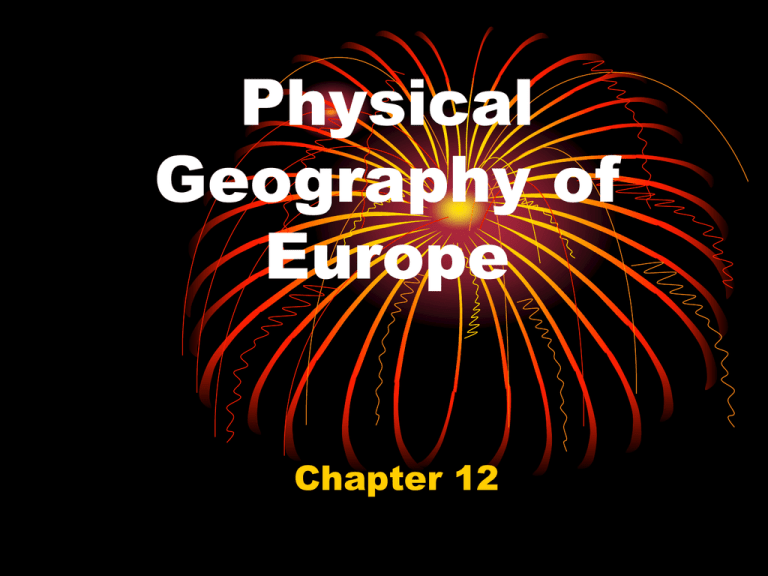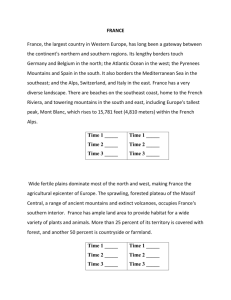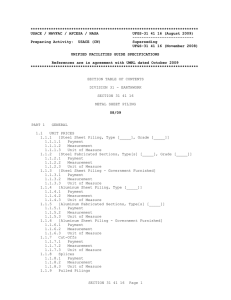Physical Geography of Europe Chapter 12
advertisement

Physical Geography of Europe Chapter 12 Chapter 12 Vocabulary Words FJORDS- STEEP U-SHAPED VALLEYS THAT CONNECT TO THE SEA AND THAT FILLED WITH SEAWATER AFTER GLACIERS MELTED. UPLANDS- HILLS OR LOW MOUNTAINS THAT MAY ALSO CONTAIN MESAS AND HIGH PLATEAUS. NORTH ATLANTIC DRIFT-A CURRENT OF WARM WATER FROM THE TROPICS, FLOWS NEAR EUROPE’S WEST COAST Landforms and Resources • Major Peninsulas •Scandinavian – Norway and Sweden •Jutland -Denmark •Iberian –Spain and Portugal •Italian -Italy •Balkan –Adriatic, Mediterranean, Aegean Sea’s • Major Mountains • Alps •Stretch across France, Italy, Germany, Switzerland, Austria and Northern Balkans • Pyrenees •Border between France and Spain • Major Rivers • Rhine –flows south to north from the Alps bordering Switzerland , through Germany and entering the North Sea through the Netherlands • Danube –cuts through the heart of Europe from West to East, linking Europe to the Black Sea Resources • Europe is known for the following resources: • • • • • • Petroleum Copper Iron ore Lead Silver Uranium and Zinc Climate of Europe • North Atlantic Drift • Current of warm water from the tropics • Mistral • Cold, dry wind from north • Sirocco • Hot, steady wind from North Africa (this is why the Mediterranean Sea is so warm) Human Environment Interaction Waterways for Commerce: Venice’s Canals Builders sunk wooden pilings into the ground to help support the structures above. The city is gradually sinking due to compressions of these pilings and rising sea levels.



